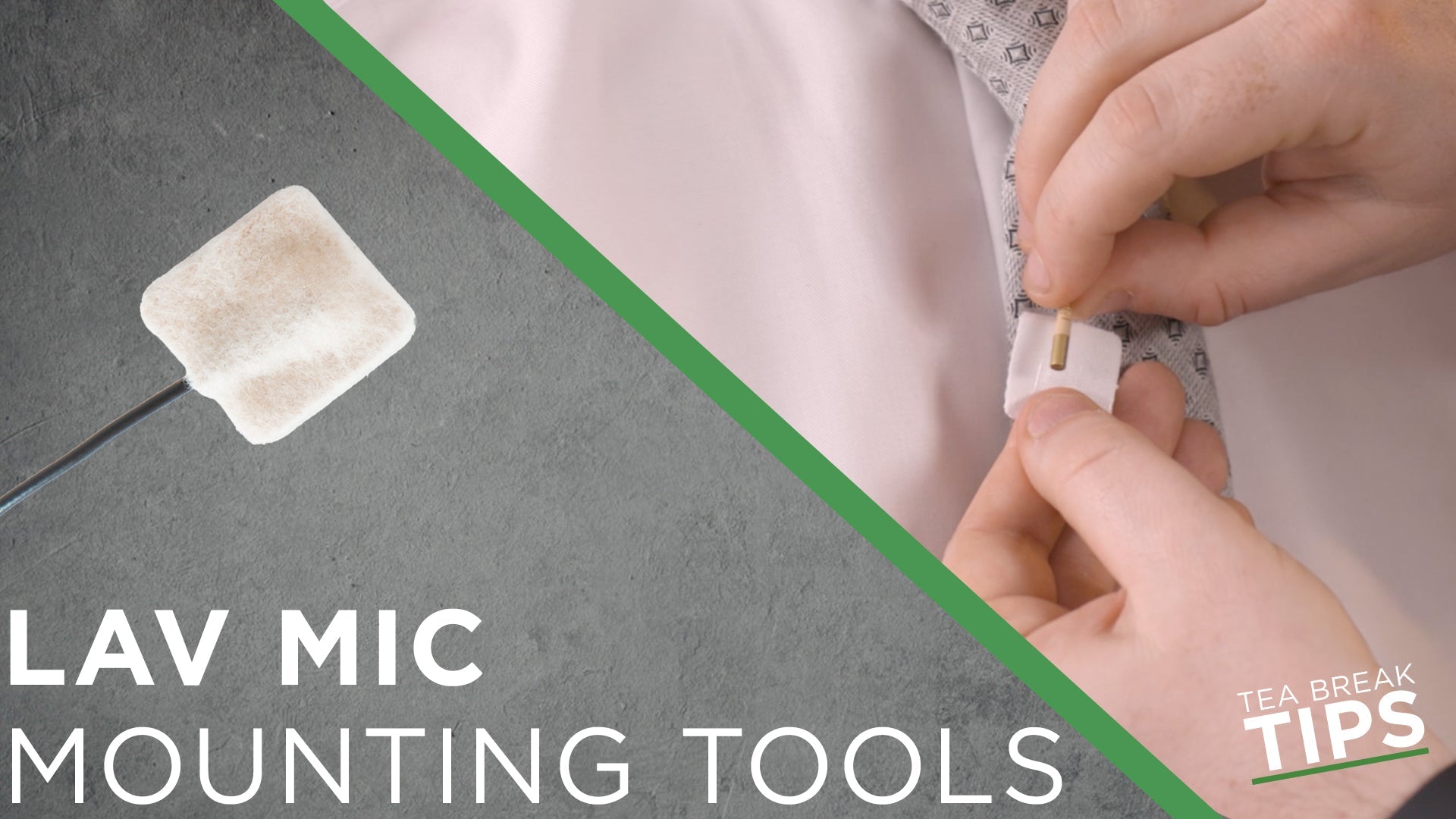The secret behind the Bubblebee fur - a story from CEO Poul Mejer
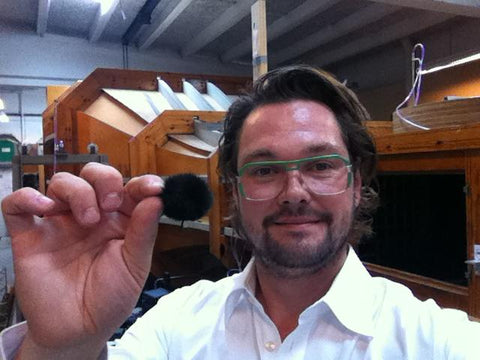
The year is 2003 and I was “Head of Sound” at the Danish version of the popular reality show Survivor (Robinson Ekspeditionen for TV3). A show like this has many challenges, but it was on that show that for the very first time, I realised that fur is not ‘just fur’.
At that time, I used the Sanken COS-11 microphone, and I had two types of fur wind protection from different brands in my toolkit.
The problem I found with the first fur windshield, was the loss of the high frequencies was too much and mumbled the sound. The second windshield was okay in terms of audio transparency, but it was really large and kept falling off the microphone, far too easily. It was from that moment that I decided to set myself a challenge… to make my own effective windshield, as small as possible without compromising the audio clarity.
So off I went and jumped down a rabbit hole of investigating materials. I began my journey by researching the uses and natural properties of fur in wild animals. In the wilderness, animals mainly use fur to keep themselves warm by keeping the wind away from the base layer of skin. However, there are many other types of animal fur which is specifically ‘adapted’ to allow an animal to survive in a particular habitat.
I jumped on my bike and set a route for all the textile shops I could find in Copenhagen and purchased samples of every type of faux fur I saw. Once I got home, I then continued my search online and did the same!
Once I had all of these fur samples on my coffee table, I began cutting and sewing the very first prototypes of what would become The Windbubbles. And what a mess I made, with over 100 windshields made from the different samples, in many different sizes.
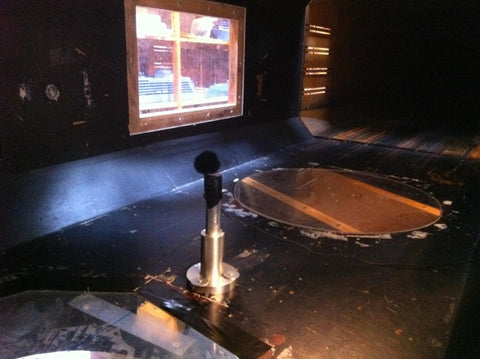
Later that year I was booked to record sound for a documentary on a boat. This was the perfect opportunity to test my prototypes in some really strong winds!
During that shoot, I discovered that I could hear a really big difference in the wind-reducing effect of the prototypes which I’d created using multi-pile fur samples. The reason these samples performed so much better is that the longer hairs helped to slow down the wind particles more gradually and took the energy out of the wind before reaching the high-density of shorter hairs in the base of the fur. The multi-pile fur is significantly quieter than the fur made with hairs of the same length. This is because the single-level fur creates a larger and harder surface area for the wind to hit, creating a larger impact and more noise.
The next step was to investigate the mass of the piles – the density of the multi-pile fur was important to slow down the wind effectively, but I wanted to make sure my windshields had a good level of transparency of the audio frequencies.
And this is where the backing material of the faux fur comes into play. It has a totally different structure compared to the animals that inspired my research. Not only did I not want to use real animal fur in my products, but skin is not very good for audio transparency! So, I can happily say that NO animals are harmed in the fur we use. But back to the woven faux fur… this needs to be as open as possible, whilst still being able to hold the mass of the piles required for wind-noise reduction. It’s also very, very important that the hairs must not fall out, as it will make a mess on the talent, in the sound bag and reduce the effectiveness of the product over time.
Last but not least, the shape is extremely important. I needed to create a space (or bubble) of “dead air” inside the windshield and around the diaphragm of the mic. Another impact of the shape of The Windbubble is that it creates a natural presence boost, which helps to level out the impact of covering up the mic. This balance is very interesting.
Fast forward to 2006 and once I was happy with the design and structure of The Windbubble, I visited Force Technology along with Senior Technology Specialist in Audiology Gert Ravn of Delta to measure my prototypes in their closed-circuit wind tunnel. The results were amazing. In Gert’s report, the summary reads: “The results show negligible influence on the microphone frequency response, and a remarkably positive effect in reduction of wind noise by 30-35 dB.” The Windbubble was a success!

Since then, I’ve continued to test many other types of fur and tweaks to improve the design and performance of our windshields. I’ve since retired from being a sound mixer and television producer, but my passion for sound remains. It’s very important that we continue to innovate and improve wherever possible to provide sound engineers with the best possible tools to help them capture the best audio possible on set.
So just using a fuzzy furry thing or some kind of “dead” cat or other animal is NOT how we at Bubblebee Industries like to work. Considering fur for wind protection is a science and takes a long time to find the absolute best balance we can, and to keep on developing our products to help our customers make sound sound better.
Poul
The Science Behind Wind & Sound: What’s the difference?
Sound is an energy which causes air molecules to vibrate at a frequency. Wind is the energy of air molecules moving from point to A to point B at velocity.
Sound energy can travel through both air molecules which are stationary and moving air molecules (wind).
Think of it as a river or lake; if you throw a pebble into a lake, it will create ripples around a stationary point. If you throw a pebble into a moving river, it will still create ripples which will travel, included in the flow of the river.
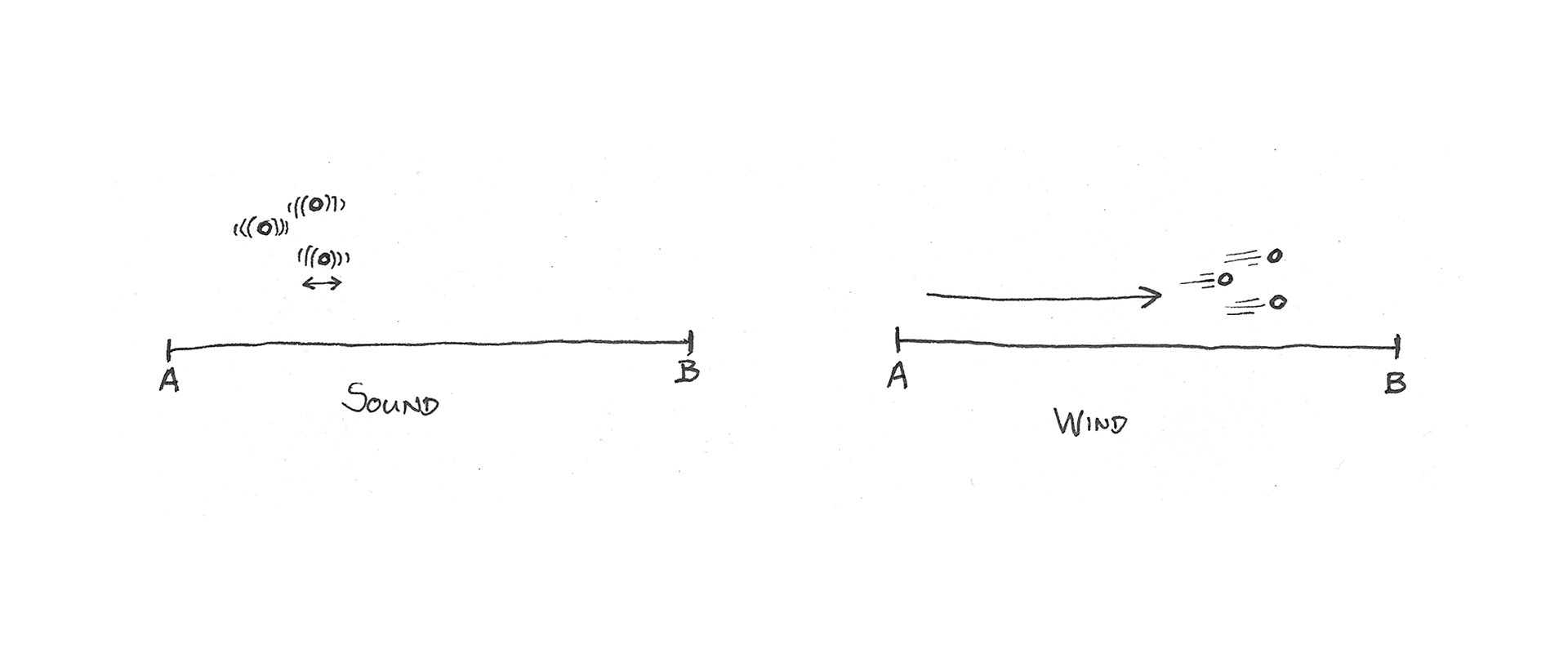
Illustration: How air molecules move in sound or wind
The human ear interprets vibrations which travel through air particles as changes in air pressure. A microphone’s diaphragm does the same thing - interprets changes in air pressure as the molecules vibrate back and forth. Wind also causes a change in pressure, causing unwanted sound in a recording as a result and stronger winds can even cause the mic diaphragm to overload.
A note on ‘wind noise’: moving air molecules make no sound inherently. The sound we perceive wind to make is always the result of these moving molecules hitting a surface of some sort, causing friction, or sound caused by the movement of these surface objects. A classic illustration of this would be the sound of air moving through trees, causing the branches and leaves to move, shake and collide.

Illustration: Wind creates increased air pressure and friction noise when meeting a surface
Omnidirectional or Directional Microphones:
Omni-directional mics measure the overall air pressure around the mic capsule. The diaphragm and backplate contain a sealed off unit of air and therefore measure the differences between pressure inside vs outside, regardless of which direction it’s pointed in. Generally the construction of Omnidirectional mics means the diaphragm is a more robust material than that of their directional counterparts. Omni mics can handle higher direct wind speeds before overloading the capsule.
Directional microphones use a more sensitive diaphragm material as to achieve ‘directionality’ they measure the differences in pressure in front of, or the behind the diaphragm. This phase offset of the sound energy results in smaller increments of difference and the diaphragm material is usually more flexible to pick these differences up effectively. Due to the softer diaphragm of a directional microphone, their capsules can be particularly susceptible to wind and overload quicker than omni mics.
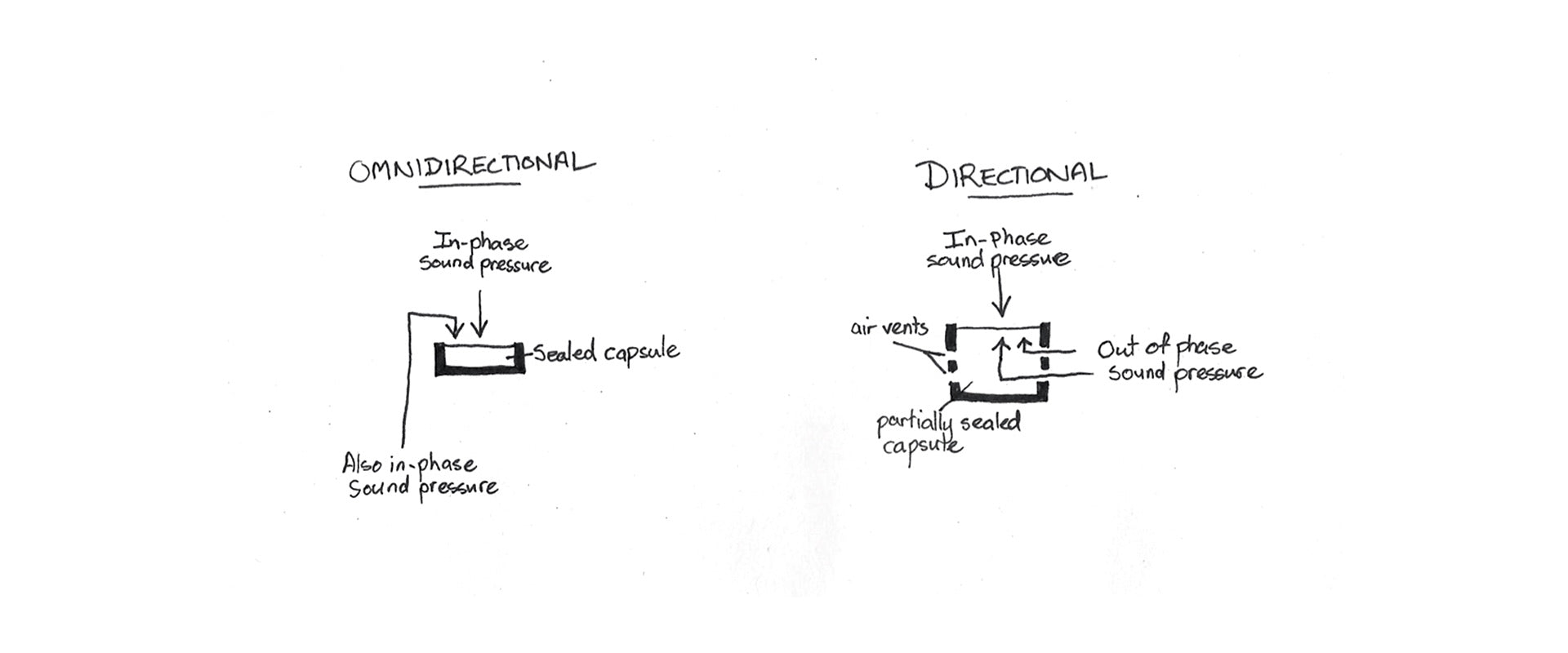
Illustration: differences in construction of omnidirectional and directional microphone capsules
The goal of our wind-protective gear is to create a safe, still space around the microphone capsule to allow it to function as closely to how it would in a still, windless environment.
Fur and Wind Protection:
In nature, animals living in the wild have coats of fur to help protect them against the elements likes wind to keep them warm (there's a reason highland cattle have so much of it, being native to the windy Scottish Highlands and Outer Hebrides!) Fur allows the wind to slow down before reaching the skin and thereby holding a pocket of warmer air next to the skin and protecting the animal from windchill.
The highland cattle (we really do think they’re cool!) have a fur coat which consists of a variety of different lengths, some strands of which reach up to 33cm (13”) in length. While our imitation fur doesn’t quite boast the same extremes, the principle behind it is similar when protecting your microphone!
We’ve taken our cues from the animal kingdom and created a dense multi-pile, super-soft faux fur. This allows wind to slow down gradually has it collides with the windshield’s fur piles, from the outside inwards.
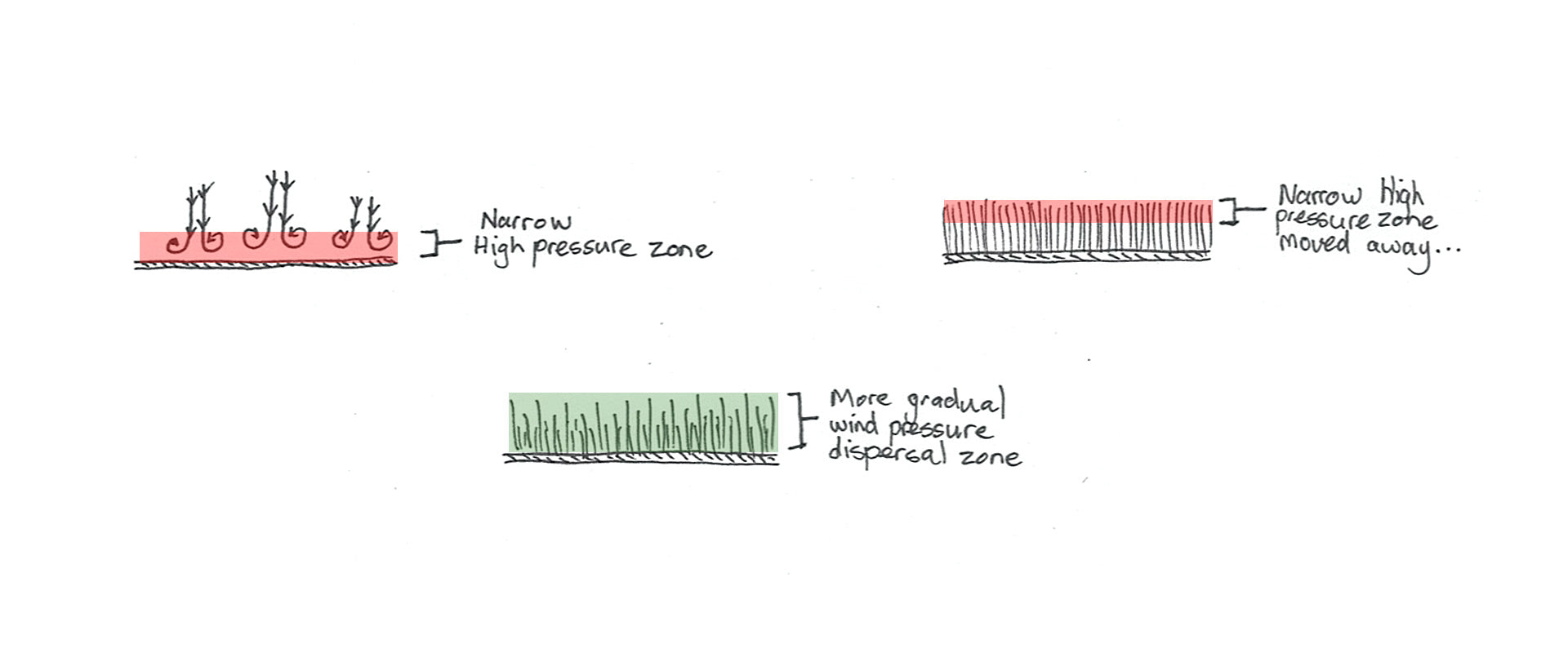
Illustration: Multi-pile fur in the dispersion of wind energy
This forgoes a lot of the ambient noise which can be caused by larger flatter surfaces as wind hits them – also the reason our strands of fur are so fine. The open mesh base of The Windkiller and Spacer Bubble uses a very porous acoustic foam to then create a neutral space around the mic. All this to allow it to function as closely to its original specs as possible.
Why Are There Two Different Lengths of Fur?
Simply put, the longer the hair, the better protection against the wind!
However, covering up a microphone in any capacity is always going to have an effect on the way that microphone captures the audio frequencies around it. There will always be a compromise. The design and construction of our wind-protection solutions allows you to find the perfect balance to ensure your recordings are protected from harmful wind noise, while retaining as much natural transparency as possible.
Because the velocity of wind outdoors isn’t a constant level, we developed a short-haired version of our fur. This allows your mic to retain even more of its original frequency response, whilst protecting against lower-mid level winds. The visual aspect of the short-haired fur is also perfect for use with on-camera mics, to ensure any potentially longer strands of fur stay well out of the shot.
You may have noticed that a couple of our wind-protection solutions for Shotgun mics, are available in both long and short-haired variations, so we wanted to expand on this and explain exactly why this is, the science behind it and when it's necessary to use each variation.
Which Products Have Different Variations of Fur Length?
The Windkiller
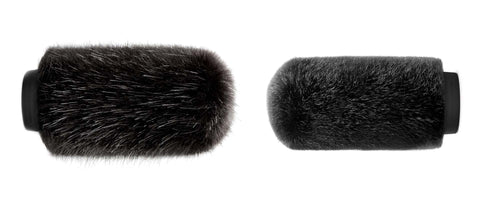
The Spacer Bubble
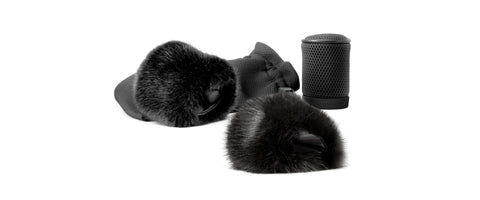
- The Long-Haired Spacer Cover (included in The Spacer Bubble)
- The Short-Haired Spacer Cover (available as a separate additional product)
The Big Windbubble
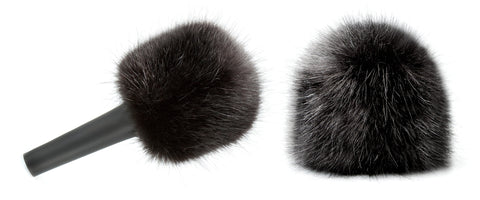
If you’d like to see and hear the differences between our wind-protection solutions, head to our YouTube channel to watch us test them out in a variety of different and windy locations.
Have a windy day!


